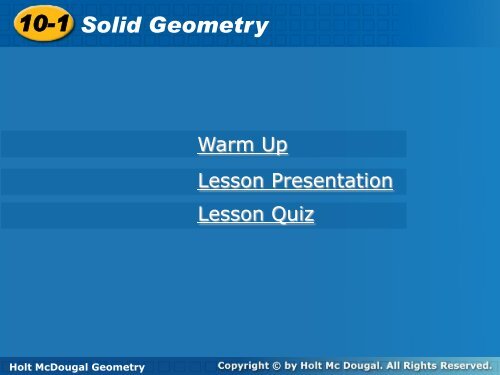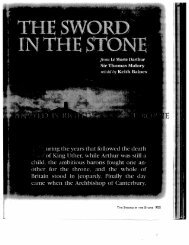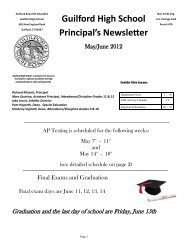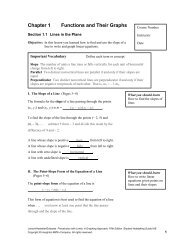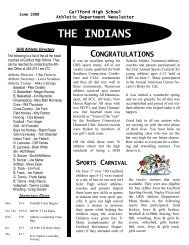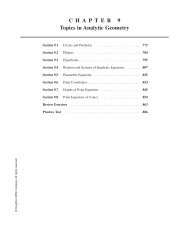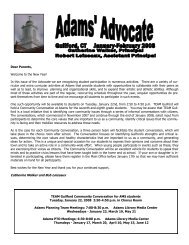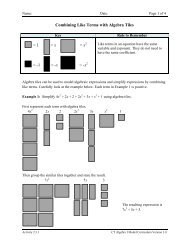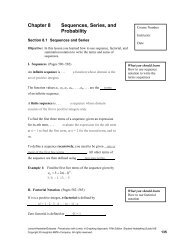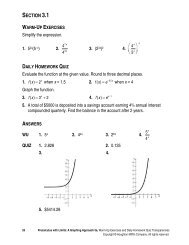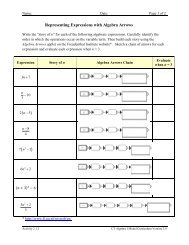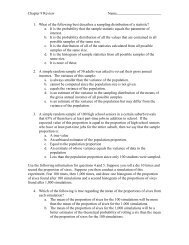10-1 Solid Geometry 10-1 Solid Geometry
10-1 Solid Geometry 10-1 Solid Geometry
10-1 Solid Geometry 10-1 Solid Geometry
Create successful ePaper yourself
Turn your PDF publications into a flip-book with our unique Google optimized e-Paper software.
<strong>10</strong>-1 <strong>Solid</strong> <strong>Geometry</strong><br />
<strong>10</strong>-1 <strong>Solid</strong> <strong>Geometry</strong><br />
Warm Up<br />
Lesson Presentation<br />
Lesson Quiz<br />
Holt McDougal <strong>Geometry</strong><br />
<strong>Geometry</strong>
<strong>10</strong>-1 <strong>Solid</strong> <strong>Geometry</strong><br />
Objectives<br />
Classify three-dimensional figures<br />
according to their properties.<br />
Use nets and cross sections to analyze<br />
three-dimensional figures.<br />
Holt McDougal <strong>Geometry</strong>
<strong>10</strong>-1 <strong>Solid</strong> <strong>Geometry</strong><br />
face<br />
edge<br />
vertex<br />
prism<br />
cylinder<br />
pyramid<br />
cone<br />
cube<br />
net<br />
cross section<br />
Vocabulary<br />
Holt McDougal <strong>Geometry</strong>
<strong>10</strong>-1 <strong>Solid</strong> <strong>Geometry</strong><br />
Three-dimensional figures, or solids, can be made up<br />
of flat or curved surfaces. Each flat surface is called a<br />
face. An edge is the segment that is the intersection<br />
of two faces. A vertex is the point that is the<br />
intersection of three or more faces.<br />
Holt McDougal <strong>Geometry</strong>
<strong>10</strong>-1 <strong>Solid</strong> <strong>Geometry</strong><br />
Holt McDougal <strong>Geometry</strong>
<strong>10</strong>-1 <strong>Solid</strong> <strong>Geometry</strong><br />
A cube is a prism with six square faces. Other prisms<br />
and pyramids are named for the shape of their bases.<br />
Holt McDougal <strong>Geometry</strong>
<strong>10</strong>-1 <strong>Solid</strong> <strong>Geometry</strong><br />
Example 1A: Classifying Three-Dimensional Figures<br />
Classify the figure. Name the vertices, edges,<br />
and bases.<br />
vertices: A, B, C, D, E, F, G, H<br />
edges:<br />
bases: ABCD, EFGH, ABFE,<br />
DCGH, ADHE, BCGF<br />
Holt McDougal <strong>Geometry</strong>
<strong>10</strong>-1 <strong>Solid</strong> <strong>Geometry</strong><br />
Example 1B: Classifying Three-Dimensional Figures<br />
Classify the figure. Name the vertices, edges,<br />
and bases.<br />
vertices: A, B, C, D, E, F<br />
edges:<br />
base: ABCDE<br />
Holt McDougal <strong>Geometry</strong>
<strong>10</strong>-1 <strong>Solid</strong> <strong>Geometry</strong><br />
Check It Out! Example 1a<br />
Classify the figure. Name the vertices, edges,<br />
and bases.<br />
M<br />
vertex: N<br />
edges: none<br />
base: •M<br />
Holt McDougal <strong>Geometry</strong>
<strong>10</strong>-1 <strong>Solid</strong> <strong>Geometry</strong><br />
Lesson Quiz: Part I<br />
1. Classify the figure. Name the vertices, edges,<br />
and bases.<br />
vertices: A, B, C, D, E, F;<br />
edges:<br />
bases: ∆ABC and ∆DEF<br />
Holt McDougal <strong>Geometry</strong>


